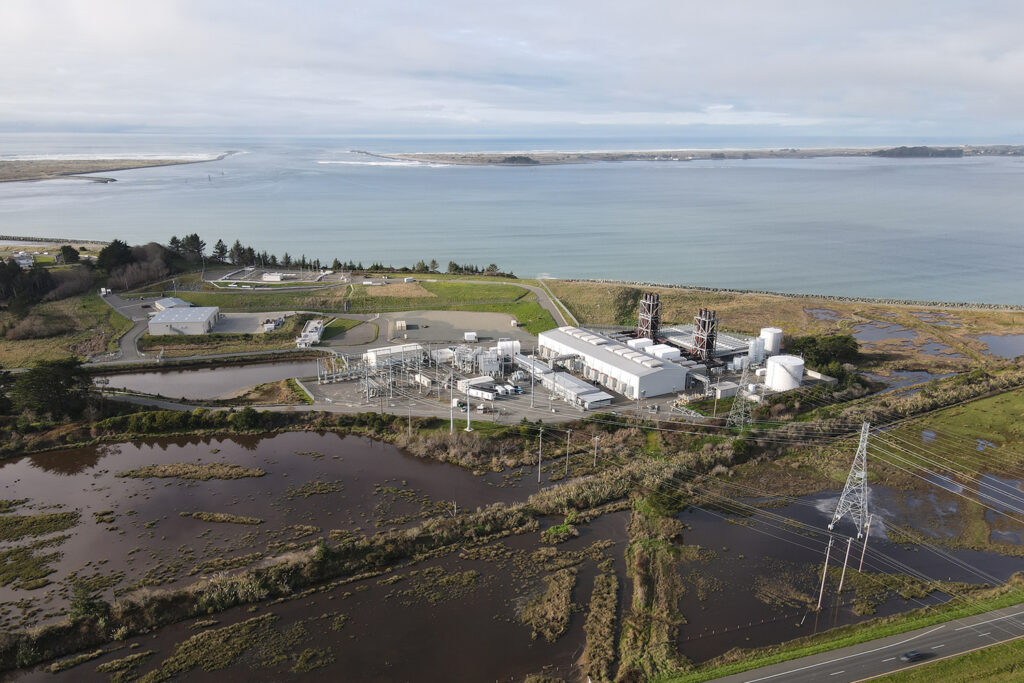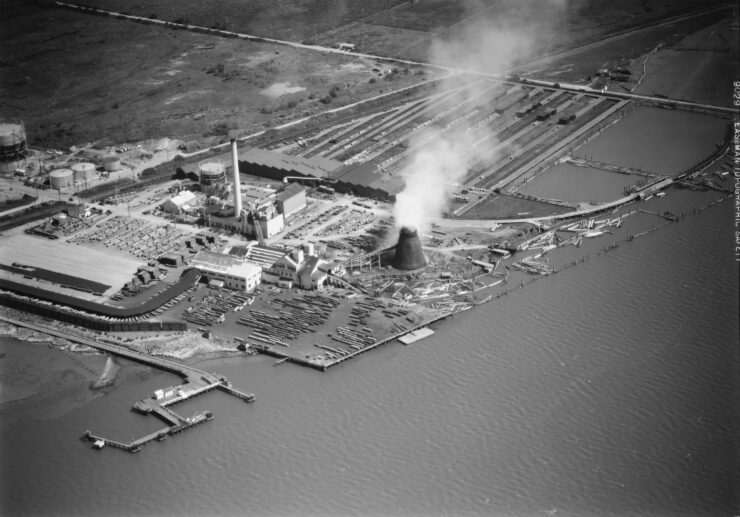Save the date! Join us on Wednesday, October 29 from 5:30-7:00 pm in BSS 166 (next to the Native American Forum at Cal Poly Humboldt), for a presentation and discussion of this research. The event is free and open to the public. For questions or accessibility requests, please contact us at schatzenergy@humboldt.edu.
A new report from the Schatz Energy Research Center provides a detailed historical account of the energy infrastructure that serves Humboldt County. Power Behind the Redwood Curtain: A History of Electric Transmission and Natural Gas Infrastructure in Humboldt County is written by Schatz Center director Arne Jacobson, and based on analysis of archival newspaper articles and documents, historic aerial photographs, and literature sources.
Jacobson chronicles the close connection between Humboldt County’s existing energy infrastructure and the timber industry. His report then links that history with contemporary opportunities and challenges, ranging from regional economic development and electricity reliability to offshore wind deployment and the State of California’s climate and clean energy goals.
Electricity use in Humboldt County dates back to 1883, when power was first used to provide lighting at a lumber mill on Tuluwat Island in Humboldt Bay. While the use of electricity grew over the following decades, the architecture of the energy system that is in place today in the county was developed primarily in the two decades that followed World War II. During this period, the region’s timber industry grew rapidly in response to the nation’s post-war economic boom, and there was a corresponding expansion in the county’s electricity and natural gas infrastructure. Once this boom began to subside in the late 1960s, energy demand stagnated and investments in the energy system focused primarily on maintaining, rather than expanding, energy infrastructure serving the region.
Today, the energy infrastructure that serves Humboldt County is small scale, aging, and fragile. The state of this infrastructure limits prospects for economic development and clean energy deployment in the county. It also undermines the livelihoods of people in some parts of the region, as they suffer from some of the least reliable electricity service in the state.
Upgrading the region’s electrical infrastructure has become a point of interest for the State of California in the context of plans to develop offshore wind along the north coast. Wind farms offshore from Humboldt Bay have potential to contribute significantly to the state’s climate and clean energy goals, but the capacity of the existing transmission lines is much smaller than the scale of the proposed wind systems. In June of 2024, the California Independent System Operator (CAISO), which plays a leading role in electric transmission planning in the state, approved development of new transmission infrastructure with sufficient capacity to support large-scale offshore wind development in the Humboldt Wind Energy Area. The approved infrastructure was designed in a manner that could also help address some – albeit not all – of Humboldt County’s electric system capacity and reliability problems. However, development of the new infrastructure is not guaranteed. The current federal administration opposes offshore wind, and transmission projects generally face significant challenges with permitting and right-of-way acquisition.
As development of this new energy infrastructure is considered, it is crucial to have an understanding of how the proposed infrastructure fits into the history of prior investments in the county’s energy system. The “Power Behind the Redwood Curtain” provides context for the proposed transmission development and for other decisions related to the future of the Humboldt County energy system.

















